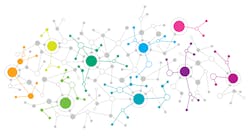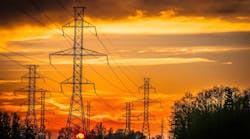If there is one thing we can be sure of, it is that progress requires change. The electric industry has been making progress and dealing with change since electricity delivery became a reality in 1882 at Manhattan’s Pearl Street Station, the first central power station in the United States. In the 135 years since that milestone, our industry — the utilities that make electricity possible — has grown and evolved and experienced many significant and often difficult changes. However, one thing has never changed, and that is our commitment to and laser focus on providing mankind with safe, affordable and reliable power.
Now we are taking part in the next big historic evolution of our grid. This time the challenge we face is perhaps even more daunting than any from the past — the integration and impact that distributed energy resources (DERs) are having on our grid systems and business models. At stake are the most fundamental relationships we maintain with our customers and the communities we serve.
Recently, I was discussing these issues with one of our strategic U.S. utility partners as it related to his department. Describing his department’s role in integrating DER, he said, “It is our job to connect the dots.”
So what are the dots? Dots are customers. Dots are solar panels. Dots are batteries. Dots are electric vehicles. Dots are generators. Dots are the utility, regulators and the communities they serve. Public interest is a dot. Dots represent all the disparate interests, technologies and resources involved in delivering electricity to the customer through a safe, affordable, reliable and clean grid.
But with machine learning and analytical tools, we are building out a network that connects the dots for us. And each dot can be potentially connected with every other dot. It is a veritable network of connected dots, and we are the center of the network.
This connect the dots concept crystallized for me a core principal we have been repeating throughout the past decade: utilities are the only entities that can deliver the distributed energy future we all require. They are the only one that can truly connect the dots.
Why is this the case? Consider the electric ecosystem as it exists today. The architecture of the electric infrastructure is complex. It is truly a just-in-time-delivery system, and management of it requires great knowledge, impressive resources and incredible care. Electricity is the lifeblood of modern societies, yet it remains a dangerous and difficult-to-deliver product requiring not only engineering and business expertise, but close working relationships with governments and communities. Since industry pioneer Sam Insull first began facilitating the modern grid, the regulated utility has been responsible for delivering electricity on behalf of all stakeholders. Over the years, specific solutions to challenges facing the utility industry have come from both insiders and outsiders, and all have helped the industry learn and grow. But while a Silicon Valley technology company, overseas solar panel manufacturer or young clean-energy startup will bring unique perspective and ideas, it is the utility that must integrate and manage the grid. They are the only entity that is looking at optimization, reliability, affordability and safety of the grid for all customers and all stakeholders.
When the lights go out, who do customers call? They call the local utility. They are the ones that understand reliability and resiliency and are mandated to provide reliable and viable service. Utilities are the ones that understand interconnections and are the experts that understand safety. Customers never call the ISO, the solar provider or the EV charger manufacturer; their trusted energy partner and service provider has always been the utility company.
We believe the electric utility will (and must) lead us into this new distributed energy future, but it requires significant obligation. Utilities must engage the edge of the grid from both a relationship and a technology perspective. In the evolving environment, utilities must have more intimate engagement with customers, which will lead to stronger relationships. We must offer technologies that connect the edge of the grid and optimize the entire energy value chain for all customers and suppliers of new technology.
Our company is playing a role in this transformation. We have been diligently working to create opportunities to address DERs and improve the utility/customer/community relationship now and into the future. We have made great progress over the last six years and, working in partnership with the industry, have honed our solution to make it one of the most promising, unique and easily integrated tool sets available. While some during the past two decades have suggested that Utilities are not well equipped for modernization in digital times, the past 12 months have seen very public reversals of this notion, and experts now recognize that the utility must be a partner in the evolution to a modern, digitally enhanced grid. Utilities are the only entities capable of ensuring that the grid evolves holistically in a way that benefits all stakeholders. We must remember that when new technologies are introduced into the grid, the utility is responsible for the outcome, good or bad. Let us all work together to enable utilities to continue to connect the dots the way they always have. That will ultimately lead to a more resilient, reliable and efficient grid for another century.
Many may have forgotten, but this is nothing new. Our industry has been successfully connecting the dots since 1882


